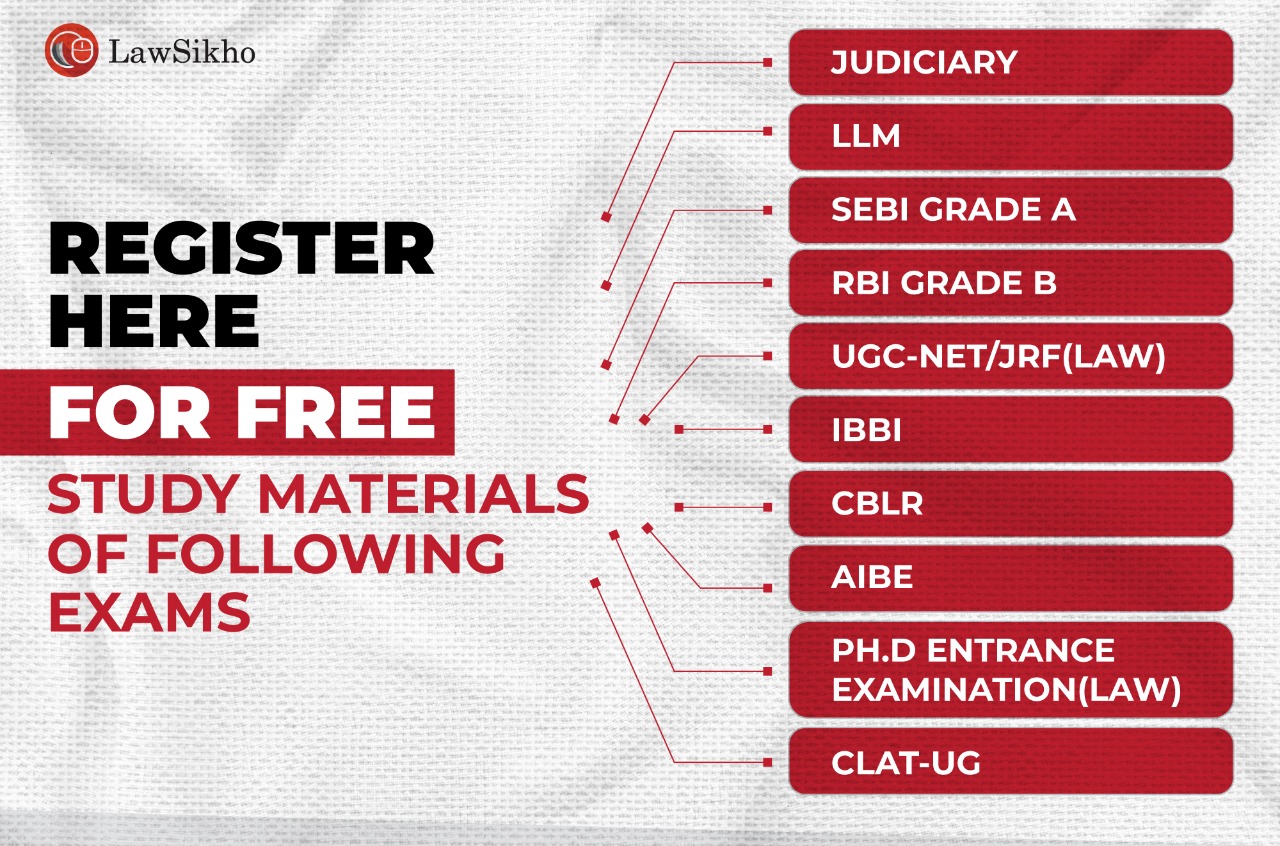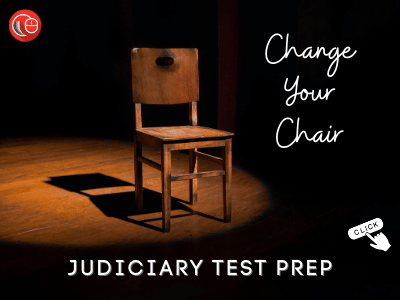Mortgage and charge of immovable property under Transfer of Property Act, 1882

This article is written by Chandana pursuing B.Com.LLB (Hons) from the Tamil Nadu Dr Ambedkar Law University (SOEL). This article deals with Mortgages and Charges of Immovable Property under Transfer of Property Act, 1882.
Table of Contents
Introduction
The Transfer of Property Act, 1882 deals with a) various specific transfers relating to immovable property. b) general principles relating to the transfer of movables and immovable property. Chapter II of The Transfer of Property Act, 1882 deals with both movable and immovable property. Section 58 to 104 of the Transfer of Property Act, 1882 deals with mortgages and charges.


Mortgage under Transfer of Property Act, 1882
Section 58 to 104 of the Transfer of Property Act, 1882 deals with mortgages and charges.
Below mentioned sections are important sections.
As per Section 58 of Transfer of Property Act, 1882 the following words are defined
A mortgage is the transfer of an interest in immovable property for the purpose of securing the payment of money advanced, an existing or future debt or the performance of an engagement which may give rise to a pecuniary liability.
The person who transfers the interest in an immovable property is called the mortgagor.
The person to whom it is transferred is called the mortgagee.
The principal money and interest of which payment is secured for time being is called mortgage money.
The instrument by which the transfer is effected is called a mortgage deed.

Mortgage
A mortgage is a transfer of an interest in immovable property and it is given as a security for a loan. The ownership of an immovable property remains with the mortgagor itself but some interest in the property is transferred to the mortgagee who has given a loan.
Essential conditions of a mortgage:
- There is a transfer of interest to the mortgagee.
- The interest created in specific immovable property.
- The mortgage should be supported by consideration.
Kinds of Mortgage
As per Section 58 of Transfer of Property, there are six kinds of mortgages
Simple Mortgage
- Simple Mortgage is defined under Section 58(b) of Transfer of Property Act, 1882.
- In a simple mortgage, the mortgagor does not transfer immovable property to the mortgagee but agrees to pay the mortgage money.
- The mortgagee agrees on a condition that in the event of not paying the mortgage money the mortgagee has every right to sell the property and can use the proceeds of the sale and such a transaction is called a simple mortgage.
Conditional Mortgage
- Mortgage by conditional sale is defined under Section 58(c) of Transfer of Property Act, 1882.
- In this mortgagee places three conditions to the mortgagor, and the mortgagee shall have the right to sell the property if:
- mortgagor defaults in payment of mortgage money on a certain date.
- as soon as the payment is made by the mortgagor the sale shall become void.
- on the payment of money by the mortgagor, the property is transferred and such a transaction is called a mortgage by conditional sale.
Usufructuary Mortgage
- Usufructuary Mortgage is defined under Section 58(d) of Transfer of Property Act, 1882.
- In this mortgage, the mortgagor delivers the possession of the property to the mortgagee and authorises the mortgagee to retain such property until the payment is made by the mortgagor and further authorise him to receive the rent or profit arising from such mortgaged property and to appropriate the same instead of payment of interest. Such a transaction is called a Usufructuary transaction.
English Mortgage
- English Mortgage is defined under Section 58(e) of Transfer of Property Act, 1882.
- In this mortgage, the mortgagor transfers the property absolutely to the mortgagee and binds himself that he will repay the mortgage money on the specified date and lays down a condition that on repayment of money mortgagee shall re-transfer the property. Such a transaction is called an English mortgage transaction.
Deposit of title-deeds
- Deposit of title -deeds are defined under Section 58(f) of Transfer of Property Act, 1882.
- In this mortgage where a person is in Calcutta, Madras, Bombay and in any other towns as specified by the state government and the mortgagor delivers to a creditor or his agent the documents of title of immovable property with an intent to create security and then such a transaction is called Deposits of title-deeds.
Anomalous Mortgage
- An Anomalous Mortgage is defined under Section 58(f) of Transfer of Property Act, 1882.
- A mortgage which is not any one of the mortgages mentioned above is called an anomalous mortgage.
Rights and Liabilities of Mortgagor and Mortgagee
Rights of Mortgagor
Right of Redemption
As per Section 60 of the Transfer of the Property Act, 1882 one of the important rights of the mortgagor is the right to redeem the mortgage.

- Once the money has become due on the specified date the mortgagor has the right to get back the mortgaged property on paying the money to the mortgagee.
- Right to redemption is a statutory and legal right which cannot be extinguished on the entering into any agreement.
Right to transfer to a third party
- As per Section 60A of the Transfer of Property Act, 1882 the mortgagor may direct the mortgagee to assign the mortgage debt and authorise him to transfer the property to a third party instead of transferring him the same.
- The object of this section is to enable the mortgagor to pay off the debt of the mortgagee by taking a loan from another person on the security of the same property.
Right to inspection and production of documents
- As per Section 60B of the Transfer of Property Act, 1882 the mortgagor may inspect anytime the document of title relating to the mortgaged property which is in the custody of the mortgagee.
- The costs and expenses incurred while inspecting the documents may be borne by the mortgagee.
Right to accession
- As per Section 63 of the Transfer of Property Act, 1882 during the subsistence of the mortgage if any accession is made to the mortgaged property where the property is in possession of the mortgagor itself and then the mortgagor has a right to take in accession after the redemption of the mortgage.
- Accession can be of two types:
- Natural accession.
- Acquired accession.
Right to improvement
- As per Section 63A of the Transfer of Property Act, 1882 during the subsistence of the mortgage if any improvement is made to the property where the property is in possession of the mortgagee and then the mortgagor has a right to take the improvements made to the property upon the redemption.
- But where the improvements were at cost of the mortgage by preserving the property from destruction then the mortgagor is liable to pay the cost which is incurred by the mortgagee in preserving the property.
Right to a renewed lease
- As per Section 64 of the Transfer of Property Act, 1882 where the property which the mortgagor has given for mortgage is a leasehold property if the mortgagee renews the leases during the subsistence of mortgage the mortgagor shall obtain the benefit of the lease upon the redemption of the mortgage.
Right to grant a lease
- As per Section 65A of the Transfer of Property Act, 1882 a mortgagor shall have the right to grant a lease of which is lawfully in possession with the mortgagee and such lease shall be binding on the mortgagee subject to the following conditions:
- lease shall be according to the local laws, custom or usages.
- no rent or premium shall be paid in advance.
- the lease shall not contain a covenant for renewal.
- the lease shall come into effect within six months from the date on which it is made.
- in case lease of buildings, the duration of the lease shall not exceed not more than three years.

Liabilities of Mortgagor
Section 65 and 66 of the Transfer of the Property Act, 1882 deals with the liabilities of the mortgagor.
Section 65 is the implied liabilities which are laid upon the mortgagor. Subject to the contrary, every mortgagor is deemed to have made the following covenant.
a. Covenant for title
- As per Section 65(a) of the Transfer of the Property Act, 1882 there is an implied covenant that the mortgagor transferring the interest in the property to the mortgagee belongs to the mortgagor only.
- And it is necessary that the mortgagor possess the transferable interest in the property.
- In case mortgagor makes a breach in the covenant the mortgagor is liable to compensate.
b. Covenant for the defence of the title
- As per Section 65(b) of the Transfer of the Property Act, 1882 the mortgagor has a duty impliedly to either defend the title if anyone tries to take away the title from the mortgagee or help the mortgagee in defending the title.
- By doing so, the mortgagor bears all the expenses incurred while defending the title.
c. Covenant for payment of public charge
- As per Section 65(c) of the Transfer of the Property Act, 1882 there is an implied duty to the mortgagor that upon the execution of the mortgage the mortgagor shall pay all the necessary changes.
- If the mortgagor fails to meet the required charges the property would be sold by the public authorities and realise the charges.
d. Covenant for payment of rent
- As per Section 65(d) of the Transfer of the Property Act, 1882 where the property mortgaged by the mortgagor is a leasehold property there is an implied duty of the mortgagor to pay the rent of the mortgaged property.
e. Covenant for the discharge of prior mortgage
- As per Section 65(e) of the Transfer of the Property Act, 1882 there is implied duty of the mortgagor to discharge the prior mortgage if any.
- There is always a presumption that the mortgagor has a covenant with the subsequent mortgages to pay off the mortgage on becoming due.
- In such subsequent mortgage if the mortgagor makes a breach the subsequent mortgagee would have the right to sue for his mortgaged money.
Mortgagors liability for waste
- Section 66 of the Transfer of the Property Act, 1882 states there is an implied duty on mortgagor that he shall not do any act which is injurious or destructive to the mortgaged property.
- Mortgagee should also see that he also does not commit any act which results in reducing the value of the mortgaged property.
- Following activities are considered as waste by the mortgagor:
- Removing valuable fixtures from the mortgaged property.
- Pulling down the mortgaged house and taking the price of the materials.
- Cutting down the timber from the mortgaged property.
- Mining under the mortgaged building which as a result may lead to placing the building in the danger.
- Working new mines on the mortgaged property.
- Whether any particular activity is considered as waste or not depends on the degree of the loss of the mortgaged property.
- The mortgagor is liable only for the active waste and not the permissible waste.
Rights and Liabilities of Mortgagee
The rights and liabilities of a mortgagee are given from Section 67 to 77 of Transfer of Property Act, 1882.
Rights of Mortgagee in Possession
Right to foreclosure or sale
- As per Section 67 of the Transfer of Property Act, 1882 the mortgagee has a right to foreclosure or sale.
- When the mortgagor does not pay the mortgage money after the specified date is over and the mortgagor’s right to redeem the mortgaged money has become complete but he has failed to avail that right then mortgagee gets a right to institute suit for a decree that the mortgagor is absolutely debarred of his right to redeem the property.
- The difference between the right to redemption and right to foreclosure is that the former is an absolute right whereas the right to foreclose is not.
- The mortgagor cannot limit the right of redemption but the right to foreclose can be made subject to a contract between the parties.
Right to sue
- As per Section 68 of the Transfer of Property Act, 1882 the mortgagee has every right to sue for the mortgaged money.
- The mortgagee can sue for mortgaged money in the following circumstances:
- where mortgagor binds himself to repay the money to the mortgagee.
- where the property mortgaged by the mortgagee has been destroyed either wholly or partially without the fault of the mortgagee.
- where the property mortgaged, the mortgagee is deprived of the security due to some wrongful act done by the mortgagor.
- where the mortgagors fail to deliver the possession to the mortgagee.
Right to sell
- As per Section 69 of the Transfer of Property Act, 1882 the mortgagee has every right to sell the mortgaged property if the mortgaged money has not been received
- This right can be exercised by the mortgagee when the mortgagor makes a default in payment of the mortgaged money after the specified date is over.
- This right can be exercised without the intervention of the court but only in the following cases:
- if the mortgage is an English mortgage both the mortgagor and mortgage should not be Hindu, Muslim, Buddhist, or a member of any other race as specified by the state government;
- when there is a contract between the mortgagor and mortgagee the sale would take place without the intervention of the court in case of default in payment of mortgaged money;
- to exercise the above right the mortgaged property should be situated either in Calcutta, Madras, Bombay, Ahmedabad, Kanpur, Allahabad, Lucknow, Coimbatore, Cochin and Delhi.
Conditions to exercise of Power
Before the sale proceeding can take place the mortgagee has to fulfil the following conditions:
- The notice has to be served on the mortgagor in writing and three months have to be elapsed from sending the notice.
- When the money is unpaid for three money and mortgaged money is at least INR 500 in arrear.
Right to appoint a receiver
- A receiver is appointed only if there happens to be a sale under Section 69 of the Transfer of Property Act, 1882.
- The appointment of the receiver is made according to the mortgaged deed.
- The person appointing as a receiver should be willing to act as a receiver if he is unable to act as a receiver then the mortgagee can appoint the receiver if the mortgagor agrees. In case the mortgagor does not agree to the appointment made by the mortgagee then the mortgagee can apply to the court for the appointment.
- The money received by the receiver shall distribute for the following to below case
- he may discharge all the rents, taxes, land revenues, and any other charge which is affecting the property.
- he can claim back the payment along with the interest.
- he can keep a sum of money as commission and he may pay premiums on the various insurances insured.
Right to accession to mortgaged property
- As per Section 70 of the Transfer of Property Act, 1882 if there is a contract between the mortgagor and mortgagee that after the date of mortgage that the mortgagee shall have the right to the accession made to the mortgaged property then the mortgagee shall have right to all the accessions made.
Right of Mortgage to spend the money
- As per Section 72 of the Transfer of Property Act, 1882 the mortgagee has a right to spend the money when it is necessary.
There are few circumstances in which the mortgagee has a right to spend the money:
- the mortgagee can spend the money on preserving the mortgaged property from destruction, forfeiture and sale.
- the mortgagee can spend the money if circumstances arise to protect the mortgagor’s title to the property.
- when the mortgaged property happens to be a renewable leasehold property.
- the mortgagee can spend the money on insuring the mortgagor’s property.
Right to proceed of revenue sale or compensation on acquisition
- As per Section 73(1) of the Transfer of Property Act, 1882 if the mortgaged property is sold due to the non-payment of government dues then the mortgagee shall have every right to claim back his mortgaged money from such sale.
- As per Section 73(2) of the Transfer of Property Act, 1882 if the mortgaged property is acquired under the land acquisition act or any other act and the compensation is paid the mortgagee can claim his debt from such compensation.
Liabilities of Mortgagee in Possession
As per Section 76 of the Transfer of Property Act, 1882 list down the duties of the mortgagee who is in possession of the property which belongs to the mortgagor.
The duties mentioned under are the statutory duties except for the duties which are mentioned under clauses (c) and (d) the duties under these clauses are mentioned in the contract by the parties.
Duty to manage the property
- The mortgagee has a duty to take reasonable care in the property of the mortgagor.
- Though he has a liability to take reasonable care in the property the mortgagee is not bound by the directions given by the mortgagor and the mortgagee has acquired absolute rights in managing the property.
- The only condition which is put forward by the mortgagor is that he cannot lease the property beyond the termination of his interest in the mortgaged property.
Duty to collect rents and profits
- The mortgagee who is in possession of the mortgagor’s property can collect the rent and profits arising from the property.
- One outstanding feature of usufructuary mortgagee is the rent and profits collected from the property are appropriated by the mortgagee instead of payment of interest.
- Mortgagee becomes liable for the collection of rent and profit only to the property which he is liable to acquire the rent and profits and not liable for the whole rental property.
Duty to pay rent, revenue and public charges
- If there is an agreement between the mortgagor and mortgagee that the mortgagee has to pay the rents, revenue, taxes and outgoings then the mortgagee is liable to pay all of them which have been agreed by him.
- The mortgagee is not allowed to take the benefits without paying the taxes etc.
- In case the money which has been obtained from the property is insufficient for paying the charges, he may pay out of his own pocket and later add the amount which has been paid by him to the debit account.
Duty to make necessary repairs
- If there is an agreement between the mortgagor and mortgagee that the mortgagee is bound to carry out all the necessary repairs in the property then the mortgagee is liable to take care of the necessary repairs.
- The necessary repairs in the property are to be made only when there is a surplus amount from the rents and profits.
Duty not to commit any destructive act
- While the property is in the mortgagee’s possession he is prevented from committing any act which is either in destructive nature or is injurious to the mortgaged property.
- He is prohibited from carrying out any acts which may result in reducing the value of the property.
- If the property is destroyed because of acts of god then the mortgagee is not liable for the property.
Duty towards the proper use of insurance money
- Where the mortgaged property has been insured against loss by fire it is the duty of the mortgagee to apply for the insurance money in restoring the property.
- The mortgagee is also bound to apply the money received under the insurance policy in reinstating the property.
- The property which is to be insured only for the two-third of its value.
Duty to keep the accounts
- The mortgagee has a statutory duty under this provision in keeping the correct accounts of all incomes arose and expenses incurred by the mortgagee.
- The only exception is when the mortgagee is entitled to adjust the income against the interest he is not allowed to give full accounts because something there may be no money left to use for other expenses.
Duty to apply rents and profit
- This clause provides the manner in which the mortgagee who is in possession of the property has to apply for rents and profits during the mortgage.
Essential doctrines under mortgage
Doctrine of Priority
- The doctrine of Priority is provided under Section 78 and 79 of the Transfer of Property Act, 1882.
- This doctrine is based on the principle “ quite prior est tempore potior est jure ”.
- It means that first in time prevails over the other.
- Where the immovable property is transferred by the mortgagor to different mortgagees the successive mortgagee is paid only after the prior mortgagee is satisfied.
- Section 48 of the Transfer of Property Act, 1882 is an exception to this section.
- As per Section 78 of the Transfer of Property Act, 1882 in case a prior mortgage suffers from fraud, misrepresentation or gross neglect then the subsequent mortgage shall have priority over the prior mortgage.
Doctrine of Marshalling
- Marshalling is defined under Section 81 of the Transfer of the Property Act, 1882.
- In simple terms, marshalling means arranging things.
- The doctrine of marshalling means when there are two or more properties which belong to the mortgagor and the mortgages those properties to one mortgagee and then subsequently mortgage those properties which have been mortgaged to another mortgagee.
Charge under Transfer of Property Act, 1882
Section 100 to 101 of the Transfer of Property Act, 1882 deals with Charges of Immovable property.
Charge
According to Section 100 of the Transfer of Property Act, 1882 Charge means where the immovable property is transferred by one party to another party for the security of payment of money. The transaction does not amount to a mortgage and all the provisions which are applicable to simple mortgages shall apply to the charge. The charge does not transfer any interest in favour of the charge holder but he has the right to recover his money from the property.
Essential points to take into consideration as mentioned under Section 100 of Transfer of Property Act, 1882:
- A charge can be created either by an act of parties or through the operation of law.
- It is created as a security for payment of money.
- The transaction which is created does not amount to a mortgage.
- A charge can be enforced by a suit.
- A charge may be extinguished either by an act of parties by way of the release of debt or by a novation or by a merger.
Distinctions between a mortgage and a charge
| Mortgage | Charge |
| A mortgage is always created only for the payment of a debt. | A charge which is created as security for the payment of money may not always be for debt. |
| In a mortgage, there is an agreement between the parties that a pasty will pay the money. | In charge, there is no such formal agreement between the parties. |
| It is said that every mortgage is a charge. | Every charge is not a mortgage. |
| A mortgage involves the transfer of an interest in an immovable property. | In charge, there is no transfer of an interest in favour of the charge holder. |
| A simple mortgage can be enforced within 12 years and a mortgage other than a simple mortgage can be enforced within 30 years. | A charge can be enforced within 12 years. |
Distinctions between charge and lien
| Charge | Lien |
| A charge can be created either by the act of the parties or by operation of law. | A lien can be created by only the operation of law. |
| A charge can be created only on immovable property. | A lien can be created either on movable property and immovable property. |
| A charge is not possessory in nature. | A lien is possessory in nature. |
No merger in case of subsequent encumbrance
According to Section 101 of Transfer of Property Act, 1882 states the mortgagee of immovable property or the person who is having a charge on the immovable property or the transferee from such mortgagee or charge-holder may acquire the rights in the property of the mortgagor without merging the mortgage or the charge as between:
- himself and the subsequent mortgagee of the same property.
- himself and a person having charge upon the same property.
Such subsequent mortgage or charge cannot be sold or foreclose without redeeming the prior mortgage or charge.
Conclusion
The concept of mortgage is one of the important concepts under the Transfer of Property Act, 1882 as it helps in securing the debt to the mortgagor and also helps in redeeming the property as soon as the mortgagor pays back the amount due to the mortgagee.
References
- Textbook on Transfer of Property Act, 1882 by Dr. Avtar Singh.
- Textbook on Transfer of Property Act, 1882 by Abinav Misra.
- https://indiankanoon.org/doc/515323/
Students ofLawsikho coursesregularly produce writing assignments and work on practical exercises as a part of their coursework and develop themselves in real-life practical skills. LawSikho has created a telegram group for exchanging legal knowledge, referrals, and various opportunities. You can click on this link and join: https://t.me/lawyerscommunity Follow us on Instagram and subscribe to our YouTube channel for more amazing legal content.

- TAGS
- Charge under Transfer of Property Act
- Essential doctrines under mortgage
- Kinds of Mortgage
- Mortgage under Transfer of Property Act
- Rights and Liabilities of Mortgagor and Mortgagee








